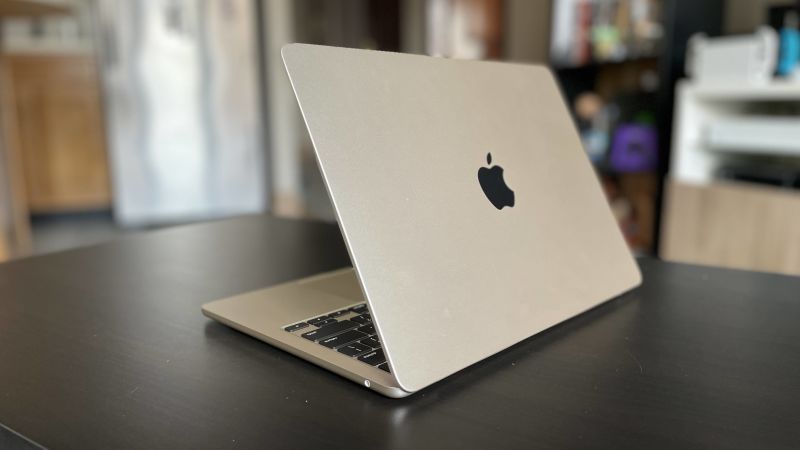Table of Contents
ToggleApple’s M1 Pro processor is a powerful chip that has been praised for its performance and efficiency. One of the critical decisions users must make when choosing an M1 Pro-based device is whether to opt for the 8-core or 10-core version.
This article will tell the differences between the two versions and explain why the M1 Pro 10-core is more efficient than its 8-core counterpart.
What is the M1 Pro?
The M1 Pro is a system on a chip (SoC) developed by Apple. It is designed for Mac computers and provides high-performance computing capabilities while being energy efficient.
The M1 Pro has several features that make it an attractive choice for users looking for a powerful and efficient chip, including:
- 10 CPU cores (or 8 cores in the base model)
- 16-core Neural Engine for machine learning tasks
- Up to 32GB of RAM
- Integrated graphics with up to 32 GPU cores
What are the differences between the M1 Pro 8-core and 10-core?
Regarding M1 Pro 8 cores vs. 10 cores, the key difference is the number of CPU cores. The 8-core version has 4 high-performance cores and 4 high-efficiency cores, while the 10-core version has 8 high-performance and 2 high-efficiency cores.
In addition, the 10-core version has a larger cache size (30MB vs. 24MB) and a higher maximum memory bandwidth (400GB/s vs. 200GB/s).
Why is the M1 Pro 10-core more efficient?
The M1 Pro 10-core is more efficient than the 8-core version for a few reasons. First, the additional high-performance cores allow for better multithreading performance.
This means that the processor can handle more tasks simultaneously without slowing down. This is particularly important for users who need to run multiple applications simultaneously or perform tasks requiring much processing power.
Second, the larger cache size and higher memory bandwidth in the 10-core version help reduce the time the processor spends waiting for data to be loaded from memory. This can significantly impact overall system performance, as it reduces the amount of time the processor is idle.
Finally, the 10-core version has a higher thermal design power (TDP) than the 8-core version. This means it can sustain higher performance levels for more extended periods without overheating.
While this may result in slightly higher power consumption, it also means that the processor can deliver higher performance levels when needed.
Here’s the other reasons why 10-core is efficient:
1. Improved Thermal Management
Another factor contributing to the M1 Pro’s efficiency is its improved thermal management system. Apple has implemented a new cooling system that allows the chip to run at high-performance levels for more extended periods without overheating.
This means the M1 Pro can maintain its efficiency even under heavy loads, where other chips might have to throttle their performance to prevent overheating.
2. Unified Memory Architecture
The M1 Pro also features a unified memory architecture (UMA) that allows the CPU, GPU, and neural Engine to access the same memory pool.
This eliminates the need for data to be copied between different types of memory, which can be time-consuming and energy-intensive. By reducing the number of times data needs to be transferred, the M1 Pro can improve performance and save energy.
3. Improved Power Efficiency
The M1 Pro’s 10-core design also allows it to operate at a lower power level than other chips while still delivering high performance.
This is because the chip can distribute workloads across multiple cores, allowing each core to operate at a lower power level. This resulted in a more power-efficient system, leading to longer battery life and reduced energy consumption.
4. Integration with macOS
Finally, its tight integration with macOS further enhances the M1 Pro’s efficiency. Apple has designed the hardware and software to work together seamlessly, allowing macOS to fully exploit the chip’s capabilities.
This includes optimizations such as hardware-accelerated video encoding and decoding, which can significantly improve performance and save energy compared to software-based solutions.
Which version of the M1 Pro should you choose?
The answer to this question will depend on your specific needs and use case.
If you’re a casual user who primarily uses your Mac for web browsing, email, and other essential tasks, the 8-core version may be sufficient.
However, suppose you’re a professional user who needs to run multiple applications simultaneously or perform tasks requiring much processing power. In that case, the 10-core version will likely be a better choice.
Conclusion
In conclusion, the M1 Pro 10-core is more efficient than the 8-core version due to its additional high-performance cores, larger cache size, higher memory bandwidth, and higher TDP.
While the 8-core version may be sufficient for casual users, the 10-core version is a better choice for professional users who need the highest levels of performance and efficiency.

We offer the platform where you can surf through articles and blogs to enrich yourself with a wide range of information on technology and trends in and around you. We aim to virtue all our visitors with those skills and assist them in understanding facts and figures about different aspects.








